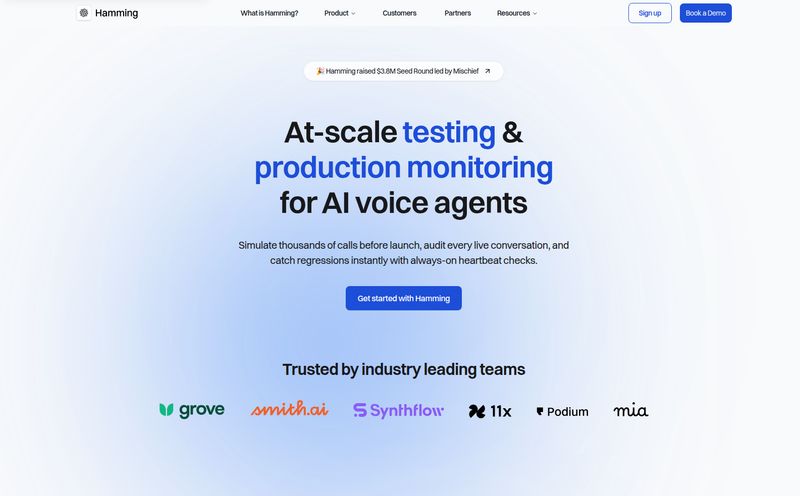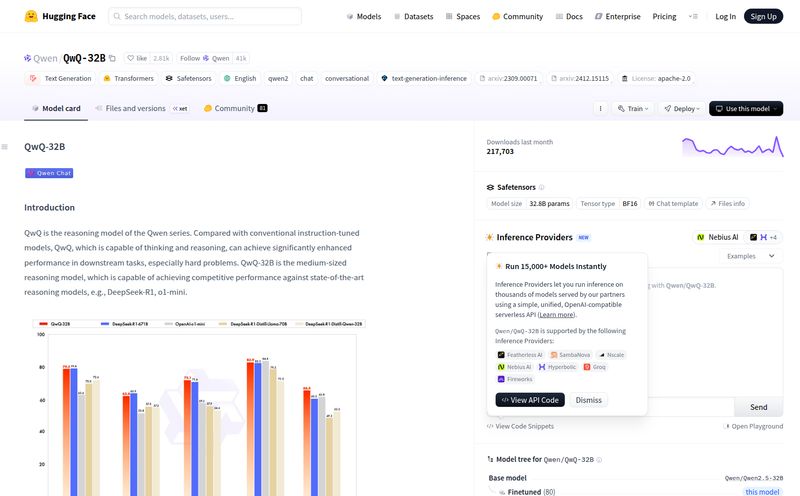I’ve spent more nights than I care to admit staring at progress bars, nursing a cold coffee, and willing a machine learning model to just… finish… training. If you've ever worked with large-scale AI, you know the feeling. The bottleneck isn't usually the idea or the data; it's the hardware. It's the eternal scramble for more GPU clusters, the complex dance of distributed computing, and the nagging sense that we're trying to build a rocket ship with off-the-shelf car parts.
For years, the answer has always been the same: more GPUs. Stack 'em high. But what if that’s not the answer? What if, instead of adding more cars to the highway, someone just built a completely new kind of road? That’s the question a company called Cerebras seems to be answering. And frankly, their solution is one of the most exciting, and downright audacious, things I've seen in the hardware space in a long, long time.
So, What Exactly is Cerebras?
Let's get this out of the way: Cerebras isn't just another company making a faster chip. That's missing the forest for the trees. They are building complete, integrated AI computing systems designed for one purpose and one purpose only: to solve the biggest AI problems, faster than anyone else. At the heart of this is their flagship product, the CS-3 system, which is less a computer and more a dedicated AI supercomputer in a box.
Their mission is pretty clear from every piece of marketing they put out. They looked at the way we build AI infrastructure—stitching together hundreds or thousands of GPUs and dealing with the communication chaos that creates—and said, "There has to be a better way."
The Magic Ingredient: The Wafer-Scale Engine
Okay, this is where it gets really cool. The secret sauce for Cerebras is their Wafer-Scale Engine (WSE). To understand why this is such a big deal, you need a quick lesson in chip manufacturing. Normally, companies design a chip, and then a foundry etches hundreds of these designs onto a big, circular silicon wafer. Then, they dice up that wafer into individual chips (called dies), test them, and package the good ones.
Cerebras threw that playbook out the window. They took a silicon wafer, which is about the size of a dinner plate, and instead of dicing it up, they made the entire wafer into a single, monstrous chip.
Imagine trying to build a massive city. The GPU approach is like building a hundred small towns, all with their own power and water, and then connecting them with a complex network of highways. There's always going to be traffic. There's always going to be latency as information travels between towns. The Cerebras WSE is like building the entire metropolis from scratch on a single, perfectly integrated grid. No highways needed because everything is local. The result? Unimaginable speed and efficiency.

Visit Cerebras
The latest version, the WSE-3, boasts some truly eye-watering numbers:
- 900,000 AI-optimized cores
- 44GB of on-chip SRAM
- 4 Trillion transistors
That's not a typo. 900,000 cores on a single piece of silicon. It's a fundamental rethinking of processor architecture.
Why Not Just Throw More GPUs at the Problem?
This is the question every hardware startup in the AI space has to answer. NVIDIA has a near-monopoly on AI training for a reason: their GPUs are powerful and their CUDA software ecosystem is incredibly mature. I get it. Sticking with the devil you know is often the path of least resistance.
But the "more GPUs" approach has a ceiling. When you're training a model with a trillion parameters, the biggest challenge isn't the math inside a single GPU; it's the communication between the GPUs. Splitting a model across thousands of processors creates a communication nightmare. It's complex to program, introduces latency, and becomes a massive engineering problem in its own right.
Cerebras sidesteps this almost entirely. By having so much memory and so many cores on a single fabric, you can fit enormous models onto one chip without all that messy distributed programming. This means data scientists can just... work. They can create ridiculously large and complex neural networks without spending six months becoming an expert in MPI (Message Passing Interface) programming. For businesses, this translates to faster iteration, faster time-to-market, and the ability to explore ideas that were previously computationally impossible.
The Cerebras CS-3 System: More Than Just a Chip
You don't just go out and buy a WSE-3. You buy the Cerebras CS-3, which is the whole refrigerator-sized system that houses the chip, along with its specialized cooling and power. It's designed to be a plug-and-play solution that slots right into a data center.
And it's built to scale. If one CS-3 isn't enough, you can cluster them together. They've shown that a cluster of 64 CS-3 systems can outperform even the largest traditional supercomputers on certain AI tasks, which is just wild. This power can be accessed either by putting one in your own data center (on-premise) or through cloud partners like Cirrascale and G42, making the technology a bit more accessible.
Let's Talk Brass Tacks: Performance and Use Cases
This kind of power isn't for running a small e-commerce recommendation engine. This is for the heavy hitters. We're talking:
- Foundational Model Training: Companies building the next GPT-5 or large-scale diffusion models. Cerebras has already demonstrated insane performance with models like Llama and Qwen.
- Scientific Research: National labs and universities doing work in areas like drug discovery, genomics, or climate modeling where simulations are massive.
- Big Enterprise AI: Financial services firms modeling market risk or pharmaceutical giants accelerating drug development pipelines.
The core advantage is the dramatic reduction in training time. A model that might take a month to train on a large GPU cluster could potentially be done in a couple of days on a CS-3. That's not just an incremental improvement; it changes the entire dynamic of R&D.
The Million-Dollar Question (Literally): What's the Catch?
Alright, let's be real. This all sounds incredible, but it's not a magic bullet. There are some serious considerations. First and foremost is the cost. Cerebras doesn't list their prices online, and in the world of enterprise hardware, that's code for "very, very expensive." You're not buying a piece of hardware; you're making a major infrastructure investment. The argument, of course, is about the Total Cost of Ownership (TCO). When you factor in the reduced engineering complexity, power consumption, and faster results, the price tag might start to make sense for the right customer.
Then there's the integration. This is a new architecture. It's not as simple as swaping out a PCIe card. Adopting Cerebras means adopting their software stack and a new way of working. While they've worked hard to make it compatible with standard frameworks like PyTorch and TensorFlow, there's still a learning curve. This is likely why they offer robust custom services—to help clients get their specific models up and running and fine-tuned for the unique architecture.
So, is it worth it? The unmatched performance for massive AI workloads is a huge pull. The ability to scale and get tailored solutions is fantastic. But the potential cost and integration complexity are real hurdles. It’s a classic high-risk, high-reward scenario.
My Final Take
After digging into Cerebras, I don't see them as an "NVIDIA killer." I see them as a different species of animal entirely. GPUs are the versatile, jack-of-all-trades pickup truck of the computing world. They're great for a million different things. The Cerebras CS-3 is a Formula 1 car. It's built for one thing—obscene speed on a specific track—and at that one thing, it's pretty much untouchable.
For the vast majority of AI work, GPUs will continue to be the right choice. But for that top 1% of users—the national labs, the hyperscalers, the research pioneers pushing the absolute boundaries of what's possible—Cerebras is offering a tantalizing glimpse of the future. They're not just making the existing paradigm faster; they're trying to build a whole new one. And in an industry that can sometimes feel a bit iterative, that's something worth getting excited about.
Frequently Asked Questions about Cerebras
- What is Cerebras?
- Cerebras is an AI company that builds high-performance computing systems, most notably the CS-3, which is powered by their massive Wafer-Scale Engine. They provide complete hardware and software solutions for accelerating the most demanding AI workloads.
- How is the Wafer-Scale Engine different from a GPU?
- A GPU is a single, powerful chip. A Wafer-Scale Engine (WSE) is a single chip built from an entire silicon wafer, containing hundreds of thousands of cores and massive on-chip memory. This design drastically reduces the communication latency that plagues large GPU clusters, allowing for faster training of enormous AI models.
- Who should consider using Cerebras systems?
- Cerebras is designed for organizations with extreme-scale AI needs, such as government labs, pharmaceutical companies, major research universities, and enterprises developing their own foundational large language models (LLMs).
- Is Cerebras better than NVIDIA?
- It's not about being "better," but about being different. NVIDIA GPUs are versatile and dominate the market. Cerebras offers a specialized solution that can dramatically outperform large GPU clusters for specific, very large-scale AI training tasks by solving the internode communication problem.
- How much does a Cerebras CS-3 system cost?
- Cerebras does not publicly disclose its pricing. These are multi-million dollar enterprise systems, and the final cost depends on the specific configuration, support, and services included in the purchase.
- Can I use Cerebras in the cloud?
- Yes. While you can purchase a CS-3 system for your own data center, Cerebras has also partnered with specialized cloud providers like Cirrascale and G42 to offer access to their technology on a cloud-based model.
Reference and Sources
- Cerebras Official Website
- Cerebras Wafer-Scale Engine 3 (WSE-3) Details
- Cirrascale Cloud Services for Cerebras



